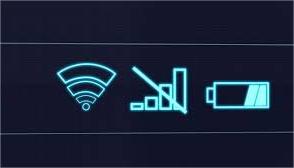In many places where quietness and order need to be maintained, such as examination rooms, conference rooms, and theaters, cellphone signal blockers have become a common tool. Antennas are a key component of cell phone jammers and have an important impact on the jamming effect. This article will introduce in detail how the antenna design of cellphone signal blockers affects the jamming effect.
Key factors in antenna design
1. Antenna type
Different types of antennas have different characteristics. Choosing the right antenna type is the key to achieving the best jamming effect.
Omnidirectional antenna
Omnidirectional antennas can transmit signals 360 degrees in the horizontal direction, which is suitable for application scenarios that require wide coverage. For example, in a large classroom or conference room, an omnidirectional antenna can ensure that all corners are covered by jamming signals.
Directional antenna
Directional antennas can focus on transmitting signals in a specific direction, with high directivity and long transmission distance. Directional antennas are suitable for application scenarios that require concentrated jamming of specific areas. For example, in a large examination room, directional antennas can be used to concentrate on jamming mobile phone signals in a specific area and reduce the impact on surrounding areas.

2. Antenna gain
Antenna gain is a parameter that measures the antenna's ability to enhance signals in a specific direction, usually in decibels (dB). High-gain antennas can concentrate signals in a specific direction, increasing the strength and coverage of interference signals. Choosing antennas with appropriate gain can reduce unnecessary power consumption while ensuring the interference effect.
3. Antenna placement and height
The placement and height of the antenna also have a significant impact on the propagation of interference signals. Reasonable antenna layout can maximize the coverage of the target area and reduce signal dead spots.
Placement
The antenna should be placed in the center of the target area as much as possible to ensure uniform signal coverage. For example, in an examination room, the antenna can be placed in the center of the classroom to ensure that all students' mobile phone signals are interfered with.
Placement height
The height of the antenna has an important impact on the signal propagation path. Generally speaking, the antenna should be placed at a relatively high position to avoid being blocked by ground obstacles. For example, in a conference room, the antenna can be installed on the ceiling to ensure that the signal can propagate freely.
4. Multi-antenna system
In some complex environments, a single antenna may not be able to achieve the ideal interference effect. At this time, you can consider using a multi-antenna system to achieve more comprehensive coverage and stronger interference effect through the collaborative work of multiple antennas.
Multi-antenna collaborative work
The multi-antenna system can achieve wider coverage and stronger signal strength by transmitting interference signals at the same time. For example, in a large examination room, multiple omnidirectional antennas can be used, distributed in different locations, to ensure that all areas are covered by interference signals.
Coordination of interference signals
In a multi-antenna system, the interference signals of each antenna need to be coordinated to avoid mutual interference between signals. Through reasonable frequency allocation and power control, the optimal interference effect of the multi-antenna system can be achieved.
Antenna design cases in practical applications
1. Application in the classroom
When using a cellphone signal blocker in the classroom, an omnidirectional antenna is usually selected and installed in the center of the classroom or on the ceiling. This layout ensures that all students' mobile phone signals are interfered and avoids signal dead spots.
2. Application in large examination rooms
In large examination rooms, a more complex antenna layout is usually required. For example, multiple directional antennas can be used to concentrate on interfering with mobile phone signals in a specific area. Through reasonable antenna layout, the maximum coverage of interference signals can be achieved to ensure that the mobile phone signals of all candidates are interfered.
3. Application in conference rooms
In conference rooms, the placement and height of antennas are particularly important. Generally speaking, omnidirectional antennas can be installed in the center or on the ceiling of the conference room to ensure that the mobile phone signals of all participants are interfered. In addition, you can choose an antenna with appropriate gain according to the size and layout of the conference room to achieve the best interference effect.
The antenna is a key component of the cellphone signal blocker and has an important impact on the interference effect. The best interference effect can be achieved by choosing the right antenna type, adjusting the antenna gain, placing the antenna position and height reasonably, and using a multi-antenna system.


